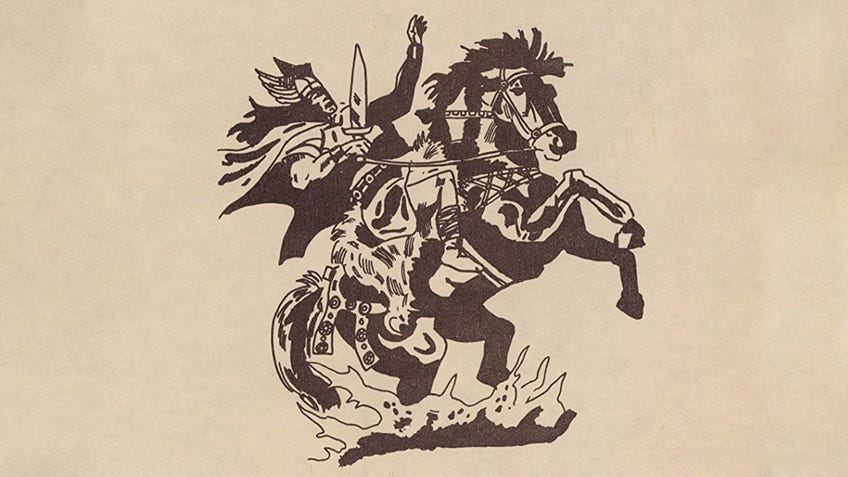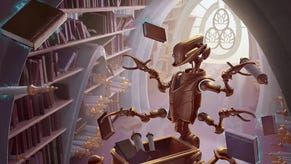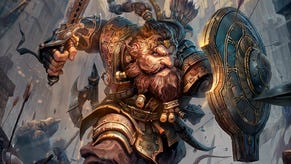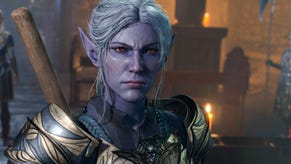Meet the Original Dungeons & Dragons diehards still playing by '70s rules
Refusing to roll with the times.
Most tabletop fans have thrown a rolled a d20 or two in their time - especially now, thanks to the unprecedented popularity of Dungeons & Dragons 5E - but we all have our own opinions about what edition of the RPG rules them all. While Fifth Edition continues to win over wide-eyed neophytes from the vast hordes of the uninitiated (read our own advice on how to get started with Dungeons & Dragons 5E as a player), even today, many groups of long-time players still refuse to make the leap to the latest version of the game. In some cases, their devotion is as old as the game itself.
Nestled within that sphere of diehards is a small but thriving community of hardcore tabletop enthusiasts who insist on keeping it as old-school as possible: playing by the rules drafted out by the three “little brown booklets” included with the original 1974 edition of TSR’s Dungeons & Dragons, usually referred to by the acronym “OD&D”. While some of these players admit that this preference might seem somewhat odd to outsiders, they insist that this “primitive” edition has many virtues that critics often fail to appreciate.
Let’s start with a short history lesson for those of us who never served in the bloody “edition wars”. The idea that the name Dungeons & Dragons constitutes a single continuous game or concept is a pervasive illusion. From the very inception of the hobby, creators Gary Gygax and Dave Arneson, and their latter-day counterparts, continued to evolve the game that would eventually become D&D, and the tone of the game (and the relative weight of its rules) varied wildly with each release. Prior to 2000’s Third Edition, there were always at least two different versions of the game on sale at the same time; while they ostensibly targeted different audiences - fledgling newcomers for the Basic Set, hard-bitten veterans for the Expert Set and so on - it led to a lot of confusion within the game’s community, especially for players arriving at established tables for the first time.
Stepping into roleplaying for the first time? Learn how to make Dungeons & Dragons 5E characters for beginners in our handy guide.
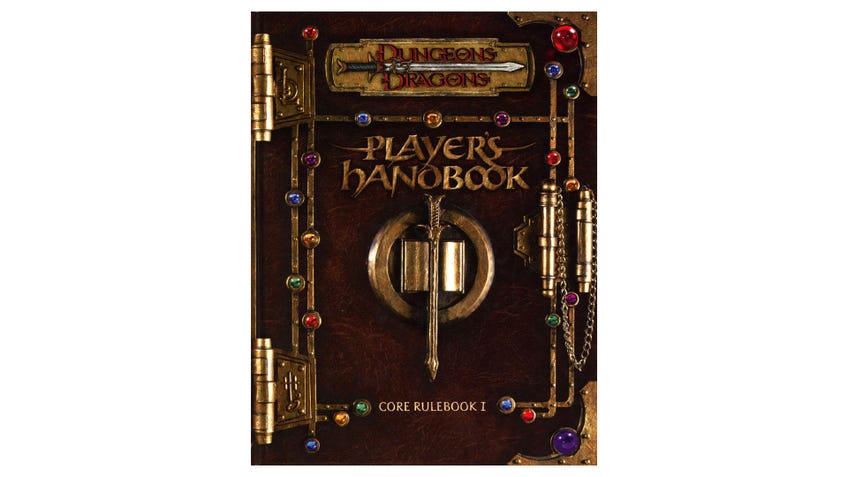
While Third Edition managed to bridge the gap between the playerbase, it also greatly increased the complexity of the ruleset, with dozens of non-combat skills clogging up the character sheet and a larger focus on specific feats and powers that made it take hours to build a viable high-level character. While video game developers had adapted earlier versions of D&D as the dice engines that powered nineties computer RPGs like Baldur’s Gate, some players felt that Third Edition was the opposite - the tabletop designers were taking their cues from popular video games, only without the convenience of the computer performing all the fiddly maths.
“There was just something about it that didn’t feel right,” says Daniel “Delta” Collins, a lecturer at the City University of New York and prolific OD&D blogger. “I played all the editions throughout the years, and as they grew more complex, I just found myself losing interest. It was as though they were emphasising the parts of the game that didn’t excite me at all.”
It was as though they were emphasising the parts of the game that didn’t excite me at all.
The heavy bookkeeping and escalating video game influence of Third Edition eventually led to the ill-fated Fourth Edition, widely considered the least-popular version of the game - critics often compared it to a tabletop version of World of Warcraft. (Despite its poor reception, believe it or not, there are still stalwart defenders of Fourth Edition out there in the wild, though you might have to dig a little deeper to find them these days.) By then, however, those who were turned off by the fantasy superheroics of Third Edition and its follow-ups had already branched off into their own digital cliques, congregating on internet forums where likeminded players and dungeon masters alike could lodge their complaints about the game’s new direction.
As tabletop designer and writer Matt Finch recalls - best-known as the mind behind Frog God Games, an acclaimed publisher of OD&D-style content - the Dragonsfoot forums quickly became one of the most popular spaces for this sort of “old-school” discussion, but one recurring issue kept haunting the community. There just weren’t enough dusty copies of these old game to go around.
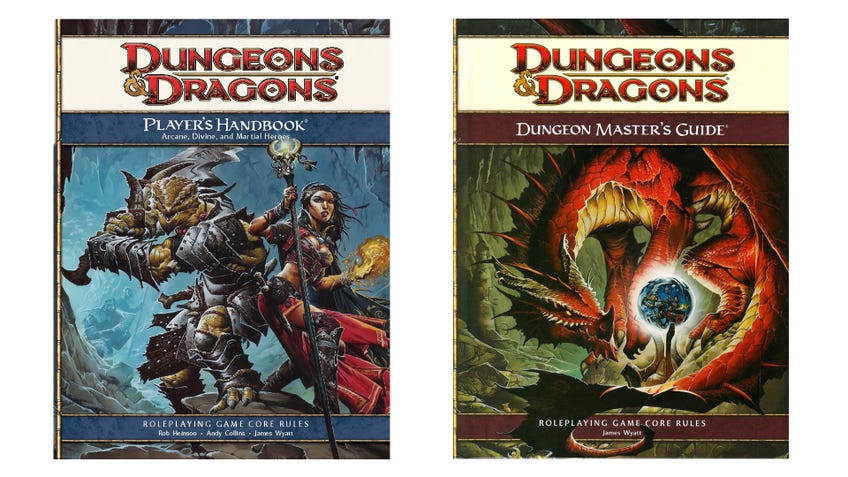
Today, you can easily buy an officially-licensed PDF copy of original Dungeons & Dragons for $10 (£8) online. Back in the 2000s, however, you had two options: either procure a used copy for an inflated price, or download an unauthorized version of the three booklets that someone had put together and shared with strangers on the internet. Finch judged both of these suboptimal.
“A lot of people were concerned that circulating scanned copies of AD&D or OD&D content would bring the big stakeholders in, the people who own the D&D name,” he says. “We didn’t want that sort of legal action. People wanted those physical books to use at the table, too. That’s why we ended up deciding to make our own versions of those rules, to make our lives easier.”
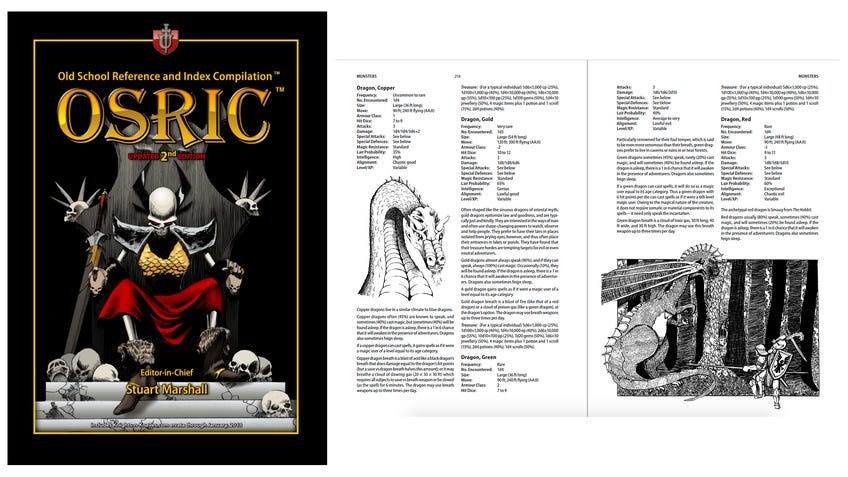
In 2006, Finch and his co-author Stuart Marshall compiled a game that they dubbed the “Old-School Reference and Index Compilation,” or OSRIC for short. Though it was legally considered a separate entity from the D&D line that used the then-novel Open Game License, the actual rules within were essentially a one-for-one copy of first-edition Advanced Dungeons & Dragons - the notably heavier follow-up to OD&D that codified several new rules. (The Open Game License, or OGL, is a copyright licence that D&D owner Wizards of the Coast first drew up for 3E, allowing third-party designers to create compatible material for the game without legal consequence.)
OSRIC was the first product in a style that gamers would come to call “retroclones” - new games that were essentially retreads of older rulesets, perhaps with the author’s optional house rules baked into the text. Over the next few years, creators introduced retroclones for many of the previous rulesets favoured by retro devotees, like the very popular Labyrinth Lord for Moldvay Basic/Expert (also known as B/X D&D). It was Finch who later authored what many consider the definitive take on the OD&D ruleset even today: Swords & Wizardry, a complete one-book recitation of the original rules.
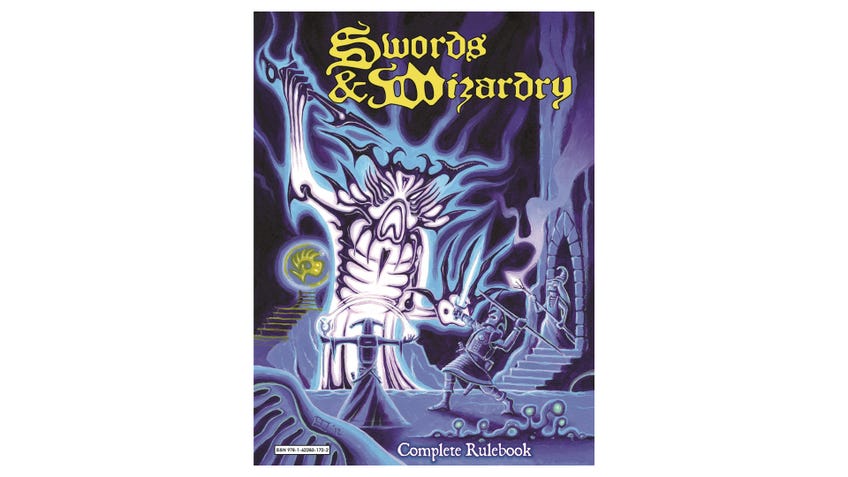
All this fascinating history aside, the burning question remains: today, why would a tabletop gamer choose to play Original Dungeons & Dragons over Fifth Edition, or any other modern roleplaying game for that matter? (Such as the best fantasy RPGs that aren't Dungeons & Dragons, for instance.) For Finch, it’s a simple matter of taste; though D&D 5E is somewhat simplified compared to Third Edition-inspired games like Pathfinder - thanks largely in part to the “roll twice, take higher” advantage mechanic replacing Third Edition’s endless barrage of static +1 modifiers - it still has concrete rules for almost every circumstance players are likely to run into, from riding a wild horse through a forest to pirate ships duking it out with cannons on the rollicking waves. While many champion this as a desirable trait of these systems, OD&D aficionados tend to disagree.
“One of the mottos that you’ll hear very often in the community is ‘rulings, not rules,’” Finch says, echoing a pithy saying that he himself coined in a 13-page guide titled A Quick Primer on Old-School Gaming. “Back in the day, when a player wanted to try to perform an action, the referee would have to come up with a ruling: the chance of possible success. If you want to climb a cliff without handholds, maybe that’s a 20% chance of success. Maybe you try to roll a d20 under your appropriate ability, like Dexterity. People did it different ways, but it had the effect of making the game feel more raw, more alive.”
In terms of the most obvious differences, the utter lethality of OD&D will likely shock many players raised on newer rules. Fifth Edition casts the player characters as heroes from the very first moment of play - while first-level characters have limited HP, it takes three failed death saves for any of them to die outright, and they can take short rests to heal themselves during the adventuring day. (A long rest of eight hours restores all your health.) In OD&D, even studly fighting-men can start with as few as one or two HP; once you hit zero, most dungeon masters (or, in the OD&D parlance, “referees”) would tell you to start working on your next character. This simplicity also has its perks; while creating a new Fifth Edition character past third level requires moving around stats, picking a subclass and learning a litany of class powers, OD&D’s process is extremely straightforward. Simply roll three six-sided dice for each stat, in order, pick one of three classes - Magic-User and Cleric join the Fighting-Man - and your race - human, elf, halfling or dwarf - and you’re pretty much off to the races.
Collins recalls adjudicating one deadly combat with a table comprised almost entirely of new players; in one round, the dice ran hot, and a horde of goblins slayed almost every member of the party. “I told them, ‘Look, the sooner you roll your new characters, the sooner you can get back in this fight,’” Collins says, laughing. “I’ve never seen people roll 3d6 so quickly. They got back in there and killed those goblins. That’s how easy it is to play.”

Many Original Dungeons & Dragons players decry the number of abilities that characters gain as they level in modern games like Fifth Edition. For example, by level two, a Fifth Edition fighter has declared a fighting style that gives them mechanical boons with certain weapons, and they can spend resources to heal themselves or take two turns in the thick of combat. In most OD&D games, the fighter gains no special tricks as they level up - just increased HP and better bonuses to saving throws. To Collins, the former approach creates a mindset where players believe that the solution to every problem lies on their character sheet, which takes them out of the fiction of the game.
A level one OD&D character is a representation of what it would be like if you actually went into a dungeon yourself.
“My favourite thing to do is to bring people in that have never played any sort of tabletop game before,” Collins says. “They lack any of the preconceived notions that can sometimes poison experienced players: metagaming, knowing all the enemies’ weaknesses even when your character wouldn’t, approaching every situation like a video game. A level one [OD&D] character is a representation of what it would be like if you actually went into a dungeon yourself - well, you wouldn’t make it very far, would you? That’s why you have to be smart and cautious… When I present a puzzle to you, you shouldn’t be looking down at your character sheet, saying, ‘I use this skill that I have +5 to, and I rolled a 12, does that solve it?’ You should use your brain, not your character’s Intelligence score. That’s what it’s all about to me.”

While the OD&D ruleset conjures strong feelings in many members of this small community, as Finch well knows, actually defining what does and doesn’t qualify as “Original D&D” is a surprisingly difficult task. To Finch, Advanced Dungeons & Dragons: First Edition was arguably Gygax and co’s first attempt to collect all the disparate house rules, dashed-off magazine articles and forgotten supplements that made up Dungeons & Dragons up to that point; everything prior to that is ultimately a matter of opinion. (That’s part of why Finch published multiple versions of Swords & Wizardry, with variable amounts of this optional content included.) Some of these disputes are more fundamental than others; for example, in the original 1974 game, all weapons dealt 1d6 damage, which meant there was no difference in the carnage wrought by a tiny dagger and a two-handed greatsword. Similarly, the original game is bereft of the sneaky thief class, the fourth point of the retro square, inspired by furtive rogues of classic fiction like Odysseus and the Grey Mouser. (The first supplement for OD&D, Greyhawk, first introduced these two concepts, which are still enshrined in the RPG today.)
Though these players don’t necessarily agree on what exactly Original Dungeons & Dragons is, they do concur on one point: the game is immensely hackable to suit the referees’ every idiosyncrasy. For his games, Collins uses a unified resolution system that he calls “target 20,” which other old-school referees have adopted en masse. He has also cut the god-channeling cleric from the already limited class list, which some might regard as a controversial move.
“A person wielding divine magic just isn’t really a part of the fiction that Gygax was pulling from,” he says. “There’s even a scene in a Fafhrd and the Gray Mouser book [by fantasy author Fritz Leiber] where a man says, ‘I have the power of God,’ and he immediately gets killed by some dungeon horror. Having one spellcasting class works better for me.”
For Finch, who still writes modules in a more retro style for Swords & Wizardry and other games, OD&D is where it all began - so why not just stay there?
“Modern players look at OD&D and say, ‘Wow, these rules seem incomplete,’” he says. “And they are in some respects, but to me, that’s a feature, not a bug. You get to fill in the holes yourself. That’s the joy of it.”
